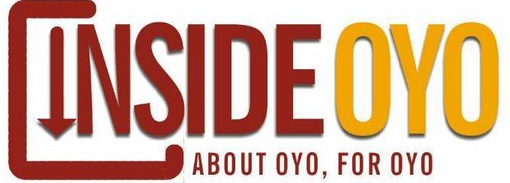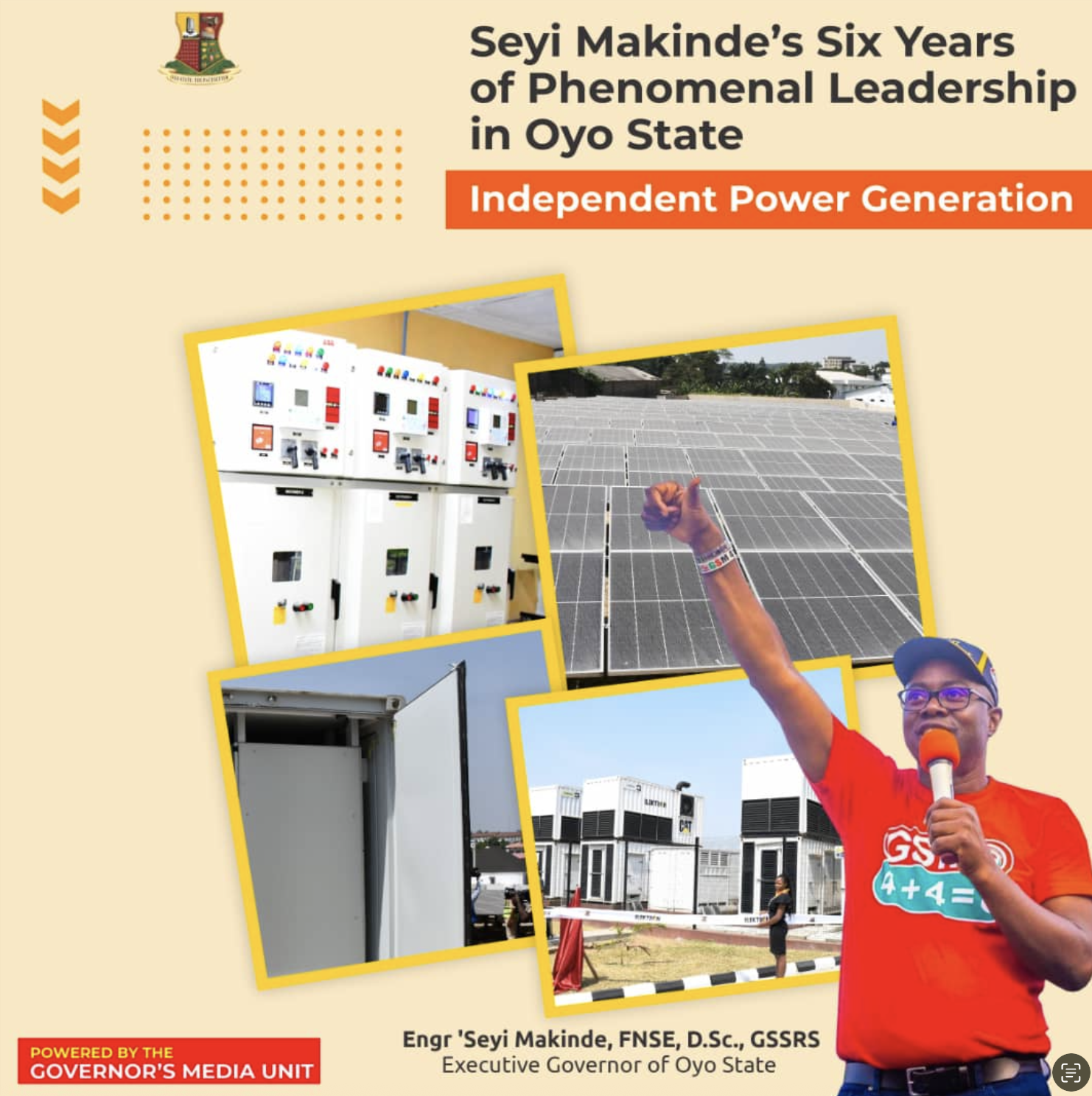This investigative report dwells on Oyo community and how multi-million projects were abandoned and poorly executed.
It is conducted by Kemi Busari of PremiumTimes in conjunction with UDEME, a social accountability platform that tracks the implementation of developmental projects and how funds released for such projects are spent.
Coordinators of the platform can be reached on Twitter via @UdemeNG
………………………………………………………………………………………………………………………
Residents of Ajinapa in Orire Local Government Area of Oyo State are immune to dirty water – that is, speaking figuratively. It was around 2 p.m. on a sunny Wednesday afternoon when this reporter met a group of women at the only source of water in the enclosed community.
The women, wary of the turmoil that dearth of water and the dry season have subjected them to, wished they had four of the bore holes instead of a water supply scheme which has never functioned since inauguration.
“We come here early in the morning to place our buckets on a queue and wait till 4 p.m. in the evening when the tap will be opened. Most times, we don’t fetch more than one bucket,” they spoke simultaneously of their plight of getting portable water in a day.
The ‘race’ to get a bucket of potable water does not leave out the older women in the community. On this sunny afternoon, two of them joined in the lamentation.
“If not that we repaired this one (the borehole), we won’t be getting water for use,” Esther Popoola, a grandmother in her 80s lamented. “We wake up early morning to queue and come back in the evening to fetch the water. Many times the borehole gets spoilt. At such times, until we contribute money for repair, we won’t get portable water.”

But how do the villagers survive when the borehole refuses to work?
A contemporary of Mrs Popoola, Deborah Adeyemi, said they either pay N100 to fetch a N25 litre container or walk a long distance to the nearby river.
“Whenever there is no water, we usually pay bikemen to fetch for us at the dam,” she said. “If we give them three jerry cans (25 litres kegs), we pay like N300. Sometimes we put alum in the water but most times, we drink the water like that. I usually send my small children to fetch most times because I don’t have the strength to carry it (the water). Instead of that water project they wasted money on, they should give us more boreholes,” she said submissively.
‘Completed’ at N196 million, the Ajinapa water supply scheme was supposed to serve the about 3,000 populated community and adjoining villages; but it never worked beyond the moment it was commissioned.
Instead, about four pumps which have never served the functions for which they were erected stood at different locations as hope of getting potable water for the villagers.
The 2015 project handled by the Ogun Osun River Basin Development Authority (OORBDA) is a completion of the water supply scheme which was initially handled by the agency’s counterpart; Lower Niger River Basin Development Agency (LNRBDA).

OORBDA, in an FOI response to UDEME, a social accountability project of the Premium Times Centre for Investigative Journalism, said N180 million (N180,023,729) was released for the project in 2015. The agency could not provide the 2016 figure.
To execute the project, Eurobel International Limited drilled and expanded the peacefully flowing Tewure River in the outskirts of Ajinapa.
However, after the commissioning of the project facilitated by Mulikat Akande, a member of the House of Representatives representing Ogbomosho North/South and Orire local government areas, the beneficiaries never fetched from the taps erected within the village.
The village head, David Ogunmola, the Alajinapa of Ajinapa, said the village gave up fallow land previously used in cultivating yam for the dam; but the sacrifice, at best, yielded no result.
“We didn’t see water,” he said in a shattered tone. “On the day of commissioning, they opened the tap at the dam and water ran but that was the only day we saw water. They promised that they will employ people to be managing it for us but we didn’t see anybody.
“At a point, I decided to look for people at the water corporation, they told me that they have done their part.
“That place used to be a yam farm. We pleaded with the farmers to move forward where we allocated another piece of land for them. Even after doing that, our water problem still remains.”
The monarch pleaded, “We want them to help us, we don’t have water to drink. We don’t even ask them for bathing or other things, all we need is water to drink.”
The dam located about 3 kilometres from the village was commissioned in 2017.
 At the site stood a newly installed transformer, generator, storage tank, dam structures for water trapping and processing and a building. However, it doesn’t seem activity occurred at the site as water within the reservoirs have either dried up or turned brown.
At the site stood a newly installed transformer, generator, storage tank, dam structures for water trapping and processing and a building. However, it doesn’t seem activity occurred at the site as water within the reservoirs have either dried up or turned brown.
One of the villagers, Ismaila Salimon, a driver, said the project started about 12 years ago.
“When they introduced the project, we were happy that the challenges of water in the town will be over but it wasn’t so. They started in 2006 during the tenure of Akala. The project dragged on till last year (2017) when they commissioned. On the day of commissioning, they started the engine, and water rushed. Since that day, there is no water. They told us that they have finished work and handed over to Water Corporation but none of them came back.
“Even if the problem is about power, is that not why they installed a generator? If there were workers at the site, even if they need money to buy diesel to power the engine, we are ready to contribute but we didn’t see anyone.”
The Udeme team observed as herdsmen led their cows to the river from which the villagers drink.
Mr. Salimon said the sight is not a surprising one as even dogs and birds share the water with villagers.
“Look at our people there washing (pointing to some women and children by the river bank). They came all the way from the village to wash here. This is what we drink since we don’t have a choice. We drink it just as the cows do. If a dogs come here after the day’s hunting, it would rub its body in the water, drink and leave, minutes later, we human beings will drink the same water. Even the birds live on this water, you can see them.”
One of the engineers who worked on the project, Adeola David, said the dispute on who to take responsibility of powering the machines at the dam accounts for its redundant state.
He told PREMIUM TIMES, “There is a dispute between the electricity company and the water corporation. The project was handed over to the Water Corporation but they are fighting on who to install electricity. At a point, I think they suggested that the community should contribute to be fuelling the generator. You will notice that the wires are already laid and connected, the transformer is there, the generator is there. Once the dispute about who to power the project is resolved, it will work.”
SIMILAR PROJECTS, HUGE BUDGETARY DISPARITY
When this reporter arrived at the site of an ongoing construction of a water supply scheme at the Oko, Surulere Local Government of Oyo State, three workers were on site. Two of them busy digging the path for the pipe which will connect the reservoir to the dam while Adeola David, who on this project is a site engineer, supervised.
The Oko dam is similar to that of Ajinapa in many regards. Construction of the dams were handled by same company, Eurobel. Also, the projects are of the same size and design.
However, while the completion of the Ajinapa project cost N196 million, the whole project in Oko cost N46 million.
OORBDA in a tersely-worded FOI response to Udeme inquiry on the project said N42,000,989 was released for the project in 2015.
The project at Oko is divided into two, each part handled by a contractor. While Eurobel handled the dis-embankment, another company, Hamkool, was in charge of electrification and mechanisation.
Mr. David said the project is close to completion and would start working as soon as pipes are connected to the river. He explained the design of the project.
“These pipes we are installing will bring water from the dam to an underground reservoir. From there, the pumping machine will pump the aeration chamber. You know this is a mass volume of water, so, majority of the water will not be exposed to air. So, there will be some dissolved gases and the first thing to do is to remove it by aeration.
“By aeration, we are exposing it to air and oxygen is readily reacting to any element. From there, the water goes into the flocculation, then another pipe takes it to another chamber for sedimentation. After sedimentation, the water goes into the filtration chambers where it would be treated and the pure one will be stored in the tank. From the tank, the water will be pumped into the town,” he said.
Meanwhile, the Oloko of Oko, Oba Solomon Akinola, is unconcerned about disparity in the fund allocated for the project. He wants the project to be completed so as to benefit his subjects.

“We had the opportunity to talk to the Honourable and the contractor handling the project. Initially, they had cash problem, the cash back-up for that project was not released on time. That necessitated the delay of the project. But as it is now, the cash has been released and we are hoping that by the end of March, as promised by the contractor, the project will be handed over to the community.
“We have electricity in Oko. It’s not going to be a problem. They are not handing over just the dam to us, they are handing over functions and every other things. The electricity, how water will get to the town, and all that will be done by the government. It’s part of their project,” he said.
N20 MILLION EARTH DAM PROJECT ‘MISSING’
When PREMIUM TIMES reporter and the Udeme team arrived Igboaka in Oyo Central Senatorial District, it was with the notion that an earth dam which was captured in the 2015 budget would be a landmark.
This, however, was not the case as nothing close exists in the agrarian community.
N20 million was budgeted for the project handled by the Lower Niger River Basin Development Agency (LNRBDA).
PREMIUM TIMES could not determine which contractor handled the project as LNRBDA did not respond to multiple FOI requests.
The earth dam is supposed to be a major structure in the village but when, after a 3-hour effort, this reporter finally located the site, about 3 metres concrete fence, two heaps of gravel and proximity to a once-flowing river gave it the face of what was expected.
Farmers and residents of the closed community were not willing to speak on the project probably because the lawmaker, Ayo Adeseun, is a kinsman.
PREMIUM TIMES observed that the river, expected to serve water to the reservoir, has dried up.
Mr Adeseun said the project is being delayed because there were no releases from the executive.
“You propose project, you lobby to get it funded at the budgetary level but the executive executes. Sometimes, they do very good job, at other times, they do very lousy ones.
“We cannot blame the river basin because it’s also a function of releases. If they don’t cash-back, what can they do? And since I have left the National Assembly, the level at which I can pressure them is almost non-existent.
“The very annoying thing is that once you have soiled so much money into something and you didn’t complete it, the money goes to nought. Unfortunately, when somebody else comes to that position the new person will want to start his or her own project.”
The senator’s claim of no releases may be refuted by documents from the office of the Accountant-General which indicate that zonal intervention projects were funded up to 80 per cent in 2015 and 2016.
Mr Adeseun, who left the Senate in 2015 after a defeat to former speaker of Oyo State House of Assembly, Monsurat Sumonu, however claimed the project was more than half-done, indicating some money had been released.
“They have actually built the core of the dam. In my estimation it’s about 65 per cent done,” he said.
Source: Premium Times



























